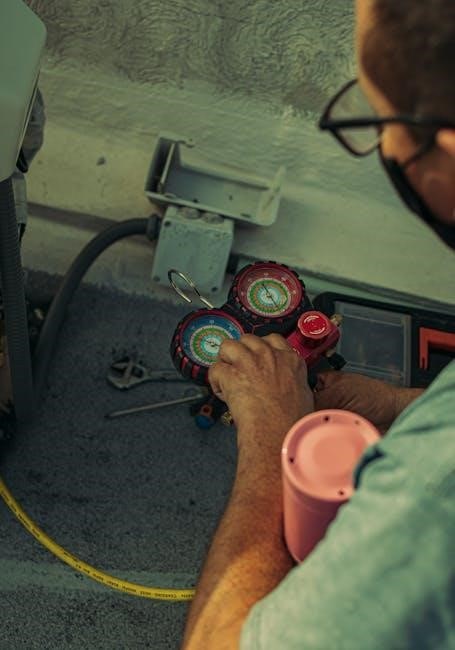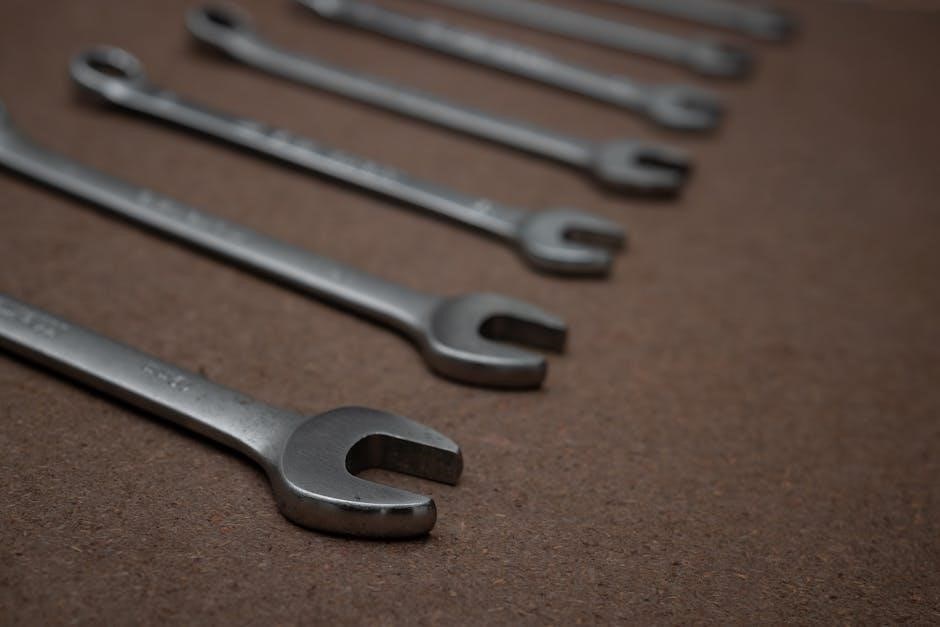The Guardian HVAC manual provides information on service life, including maintenance and disposal procedures, to ensure optimal performance and safety, with a focus on efficient operation and longevity of the system always.
Definition and Importance of Service Life
The service life of a Guardian HVAC system refers to the duration of time it operates effectively, requiring minimal maintenance and repairs, with a typical shelf life of 5 years as seen in similar devices.
The definition of service life is crucial as it determines the overall performance and efficiency of the system, including its ability to heat and cool spaces, as well as its impact on energy consumption and costs.
Understanding the importance of service life enables users to plan and schedule maintenance, repairs, and replacement of parts, ensuring the system runs smoothly and safely, which is essential for maintaining a comfortable indoor environment and preventing accidents.
The service life of a Guardian HVAC system is influenced by various factors, including usage, environmental conditions, and maintenance practices, which can affect its overall lifespan and performance, making it essential to follow the manufacturer’s guidelines and recommendations.
Proper understanding of service life is vital for optimal system operation, and users should consult the manual for specific information on maintenance and repair procedures to ensure the system functions within its intended service life.

Guardian HVAC System Overview
The Guardian HVAC system includes various components for heating and cooling, with a focus on efficient operation and longevity of the system always within a specific period.
Components and Their Roles in the System
The Guardian HVAC system consists of several key components, including a thermostat, air handler, and heating and cooling coils, which work together to provide efficient heating and cooling. The thermostat plays a crucial role in regulating the system, while the air handler is responsible for circulating air throughout the building. The heating and cooling coils are designed to transfer heat energy, providing warmth in the winter and cool air in the summer. Other components, such as fans and ductwork, also contribute to the overall operation of the system. By understanding the roles of each component, users can better appreciate the complexity and functionality of the Guardian HVAC system, and take steps to maintain and repair it as needed, using the manual as a guide for troubleshooting and maintenance tasks, ensuring optimal performance and longevity of the system.

Maintenance and Repair Procedures
Maintenance tasks include filter replacement and cleaning to ensure efficient operation always.
Regular Maintenance Tasks for Optimal Performance
Regular maintenance is crucial for optimal performance of the Guardian HVAC system, and this includes tasks such as filter replacement, cleaning of coils and fans, and checking of electrical connections. The manual provides a schedule for these tasks, which should be performed at regular intervals to ensure the system operates efficiently. A routine check of the system’s components, such as the thermostat and sensors, is also essential to identify any potential issues before they become major problems. Additionally, the manual recommends inspecting the system’s ductwork and vents to ensure they are clean and free from obstructions. By following these maintenance tasks, users can help extend the service life of their Guardian HVAC system and ensure it continues to operate safely and efficiently. The manual also provides guidance on how to perform these tasks, including step-by-step instructions and diagrams to help users understand the process.

Troubleshooting Common Issues
The Guardian HVAC manual provides guidance on troubleshooting common issues, including error codes and system malfunctions, to help users identify and resolve problems quickly and efficiently always.
Diagnostic Techniques for Identifying Problems
Diagnostic techniques are essential for identifying problems in the Guardian HVAC system, and the manual provides detailed guidance on how to use these techniques effectively. The manual includes information on how to read error codes, troubleshoot system malfunctions, and perform routine maintenance tasks to prevent problems from occurring. By following the diagnostic techniques outlined in the manual, users can quickly and efficiently identify and resolve issues with their Guardian HVAC system. The manual also provides information on how to use specialized tools and equipment to diagnose problems, and how to interpret the results of diagnostic tests. Additionally, the manual includes troubleshooting charts and diagrams to help users identify the source of problems and take corrective action. Overall, the diagnostic techniques outlined in the manual are designed to help users keep their Guardian HVAC system running smoothly and efficiently. The manual is a valuable resource for anyone who needs to diagnose and repair problems with their Guardian HVAC system.
Safety Precautions and Warnings
The manual outlines essential safety precautions to prevent accidents and ensure safe operation of the Guardian HVAC system always and properly.
Electrical Safety and Emergency Procedures
The Guardian HVAC manual emphasizes the importance of electrical safety, providing guidelines for handling electrical components and preventing shocks. A section on emergency procedures outlines steps to take in case of an electrical accident, including disconnecting power and seeking medical attention. The manual also covers proper use of safety devices, such as circuit breakers and fuses, to prevent electrical fires and other hazards. Additionally, it discusses the need for regular inspections and maintenance to ensure the electrical system is functioning properly. By following these guidelines, users can minimize the risk of electrical accidents and ensure safe operation of the Guardian HVAC system. The manual’s focus on electrical safety and emergency procedures is a critical aspect of its overall approach to ensuring user safety and preventing accidents, and is essential for anyone working with the system. Electrical safety is a top priority.

Disposal and End of Service Life Guidelines
Proper disposal methods are outlined, including recycling and hazardous waste disposal, to ensure environmental safety always and efficiently.
Proper Disposal Methods for Guardian HVAC Systems
The disposal of Guardian HVAC systems requires careful consideration of environmental and safety regulations, as outlined in the manual, with a focus on responsible waste management and recycling practices to minimize harm.
The manual provides guidance on the proper disposal of hazardous materials, such as refrigerants and electrical components, and recommends partnering with certified waste disposal professionals to ensure compliance with regulations.
Additionally, the manual emphasizes the importance of proper disposal of packaging materials and other non-hazardous waste, and encourages users to participate in recycling programs and community collection events to promote sustainability and reduce waste.
By following the prescribed disposal methods, users can help minimize the environmental impact of their Guardian HVAC system and contribute to a more sustainable future, while also ensuring compliance with relevant laws and regulations, and maintaining a safe and healthy environment.


